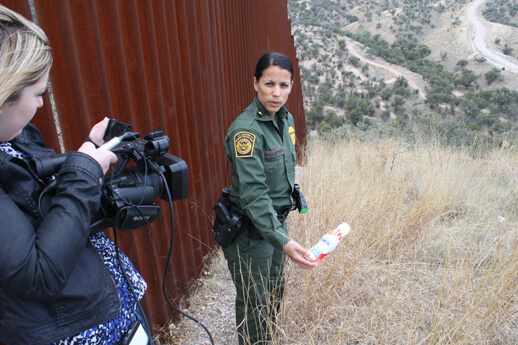Checking Out the Vitality of Legal Videography: a Comprehensive Understanding Into Its Capability in Maintaining Accurate Visual Records for Legal Situations
Lawful videography stands as a critical element in the world of legal process, offering as a quiet yet powerful onlooker in the search of justice. As we dig right into the capability and relevance of lawful videography in the context of legal instances, an extensive realization dawns upon the essential role it plays in forming the course of justice.
Importance of Lawful Videography
Highlighting the pivotal function of lawful videography in modern legal proceedings, its relevance exists in its ability to supply undeniable visual evidence that improves the discussion of facts and testimonies. By capturing live events, depositions, and witness testaments in a video clip format, legal videography makes sure that every nuance, detail, and expression is properly preserved for later review. This visual paperwork functions as an effective device in court rooms, permitting courts and jurors to much better understand the context of a case and make informed decisions based on the presented evidence.
In addition, lawful videography adds to enhanced transparency and liability in the legal system. In essence, the value of lawful videography lies in its capacity to maintain the stability of the legal procedure by catching and preserving exact visual documents that sustain the pursuit of justice.
Capability in Lawful Documentation
Lawful videography's role in modern-day legal proceedings prolongs beyond supplying visual proof; its functionality in lawful documentation is essential for precisely preserving the information of events and testaments. Through the thorough recording of depositions, courtroom process, witness testimonies, and criminal offense scene investigations, legal videography ensures an unfiltered account of events that can be taken another look at and evaluated throughout the legal process. This exact documentation works as an essential source for lawyers, judges, and courts to reference specific minutes, body language, facial expressions, and subtleties that might not be fully caught in composed records alone.
Moreover, legal videography plays an essential duty in maintaining the integrity of legal procedures by minimizing the threat of misinterpretation or control of information. The aesthetic documents recorded through legal videography offer an objective depiction of the realities offered throughout an instance, offering a comprehensive and reputable resource of proof that can significantly impact the outcome of lawful disagreements (Legal Videography). Basically, the capability of lawful videography in lawful paperwork works as a foundation in supporting transparency, accuracy, and fairness within the lawful system
Relevance in Visual Proof Preservation
Preserving aesthetic evidence via precise recording techniques is an essential element of lawful videography. By precisely recording these visuals, legal videographers play an essential duty in guaranteeing the honesty and authenticity of proof presented in court.
Aesthetic evidence conservation also assists in preventing visit site misunderstandings or misinterpretations that can develop from created or verbal testaments. The ability to see and hear occasions as they occurred can substantially impact the result of an instance. Furthermore, aesthetic proof can act as an effective device for both the prosecution and defense in providing their debates persuasively.
Duty in Ensuring Justice
In the pursuit of reasonable and just legal end results, the function of lawful videography is essential. Lawful videography plays a crucial function in making certain justice by providing impartial and exact visual evidence that can substantially influence the end result of legal cases. Unlike composed testaments or documents, video clip recordings record the nuances of body movement, face expressions, about his and intonation, offering a thorough depiction of events as they unfold. This visual evidence is particularly useful in courts, where it can assist affirm or test witness testimonies, strengthen arguments, and inevitably add to the establishment of truth and fairness.
Moreover, lawful videography functions as a means of maintaining turning points and details that might be missed or misinterpreted in created transcripts (Legal Videography). By documenting scenes, activities, and interactions in real-time, lawful videography assists avoid misrepresentations and makes certain that all celebrations involved have accessibility to the exact same information, advertising transparency and liability in the legal process. Inevitably, making use of lawful videography not only enhances the effectiveness of legal procedures but likewise upholds the concepts of justice and equity in the legal system
Essential Tool for Legal Situations

Conclusion
In final thought, legal videography plays an important function in preserving exact aesthetic records for legal instances. Its relevance lies in its functionality in lawful paperwork, significance in visual proof preservation, and role in making certain justice. As a crucial tool for lawful situations, legal videography acts as a useful resource for offering visual proof and contributing to the overall honesty of the legal procedure.
Legal videography's duty in contemporary legal procedures extends past offering aesthetic evidence; its capability in legal documents is necessary for accurately maintaining the review details of testaments and events. In essence, the capability of lawful videography in legal documentation offers as a cornerstone in promoting transparency, precision, and fairness within the lawful system.
Ultimately, the usage of legal videography not just enhances the effectiveness of legal procedures yet also promotes the concepts of justice and equity in the legal system.

As a crucial tool for lawful cases, lawful videography serves as a beneficial resource for offering visual proof and contributing to the overall stability of the legal procedure.